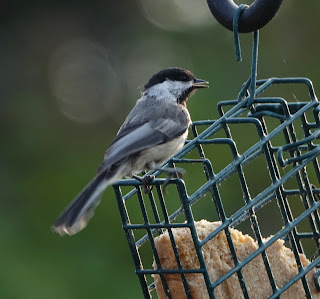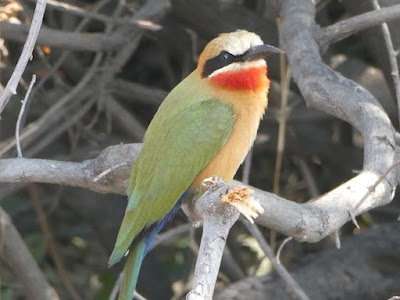A bird in the hand is a small miracle. From just inches away, a group of us marveled at a black-and-white bird’s tiny clawed feet, bright eyes, long tongue, and daintily spotted feathers.
Then the Downy Woodpecker stabbed its human handler with its sharp beak. A drop of blood beaded up on her thumb as bird bander Meredith McBurney weighed and measured the feisty creature, then fastened a metal ring around its leg.
Minutes later, the woodpecker flew off. It, at least, was unharmed.
Those of us who visited the bird banding station at Barr Lake State Park last month witnessed this surprising moment, and more. McBurney, who has been a Bird Conservancy of the Rockies staff member for more than 20 years, described the evolution of the organization’s bird banding program.
The goal hasn’t changed, she said: To better understand bird behavior, especially around migration, so breeding grounds, wintering sites, and the crucial habitats in between can be managed better. Ultimately, the aim is to help all bird species to thrive.
Briefly capturing wild birds so they can be examined and tagged remains a key component of the data collection program, McBurney said. But over the years, paper records have given way to digital databases. Unique ID numbers stamped on metal bands are still a mainstay, but for certain species, DNA collection holds even more promise. Some birds have even been fitted with lightweight radio transmitters, so a network of antennae can track their travels.
Bird populations are declining – not just here in Colorado, but across most of the country. At Barr Lake, McBurney and her team have banded far fewer birds this fall than in years past.
Construction near the lake may play a local role, she said, and a hot, dry spring likely reduced the food supply for insect-eating birds.
Looking at the bigger picture, migrating birds are losing precious habitat to development worldwide. And as the climate changes, birds’ innate urge to migrate is increasingly out of sync with the blooming plants and emerging insects they need to survive.
Aside from supporting scientific inquiry, what can ordinary people do to help wild birds?
Create mini-habitats by swapping turfgrass for native plants, McBurney said. Make fresh water available in your yard, and install a bird feeder or two. Turn off outdoor lights after dark during spring and fall migration.
“Above all, share your passion,” McBurney urged our group. “The more people know about wild birds, the more likely they are to care about them.”
Before our session was done, we watched McBurney examine two Wilson’s Warblers and an Orange-Crowned Warbler. Each was a tiny miracle – and a reminder that the fate of wild birds rests, quite literally, in our hands.
***
Want to know more? A training supervisor at the Barr Lake bird banding station recommends reading “Nature’s Best Hope: A New Approach to Conservation That Starts in Your Yard,” by Douglas W. Tallamy, and “Welcome to Subirdia: Sharing Our Neighborhoods with Wrens, Robins, Woodpeckers, and Other Wildlife,” by John J. Marzluff. For more about the Bird Conservancy of the Rockies, visit www.birdconservancy.org.
Post and photos by Christine Kindl






























